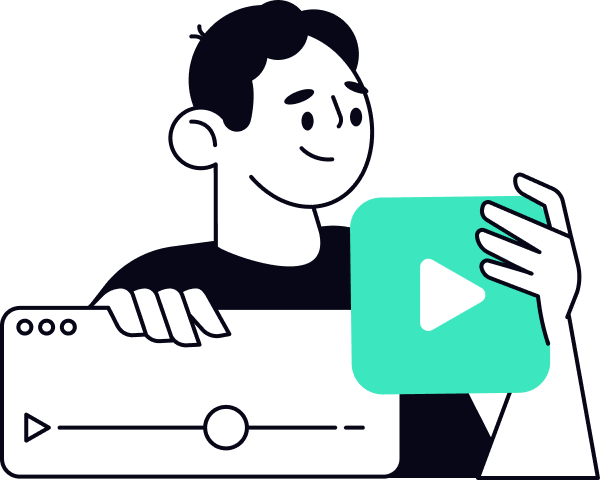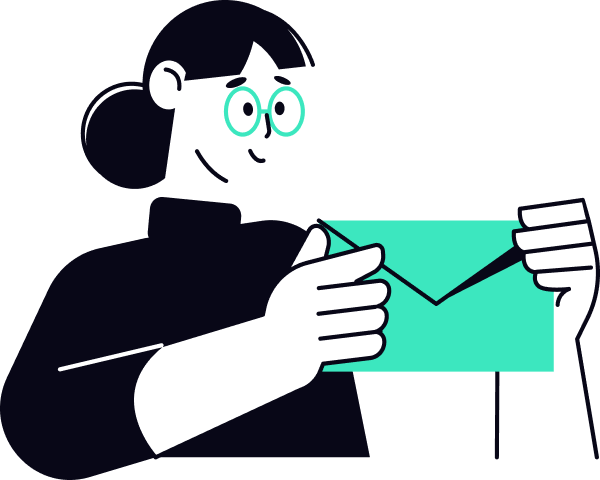Personal loan
18+
Partner financial institutions.
25+
Introduction to Personal Loan
Types of Personal Loans
Unsecured Personal Loan vs Secured Personal Loan
Personal loans are mainly divided into two categories: unsecured personal loans and secured personal loans. Each of these options offers benefits depending on your specific financial situation and needs.
- Unsecured loan:
An unsecured loan is a loan where you do not need to provide collateral (such as a car or house) to obtain financing. This type of loan relies primarily on your credit history and ability to repay. Due to the lack of collateral, lenders consider this type of loan to be a higher risk, which can result in slightly higher interest rates. However, the great thing is that you are not putting any of your assets on the line in the event of a default. This type of personal loan is ideal for people who do not have any assets to offer as collateral or who would rather not take the risk. For example, if you need financing to consolidate debt or cover unexpected expenses without touching your assets, an unsecured personal loan can be a great solution. - Guaranteed loan:
Conversely, a secured loan requires you to put up collateral to secure the loan. This collateral could be a car, a home, or any other valuable asset. Because of the reduced risk for the lender, secured personal loans typically offer lower interest rates and more flexible repayment terms. However, if you are unable to repay the loan, the lender has the right to seize the collateral. A secured loan is ideal for those who are looking for more favorable loan terms and have collateral to put up. For example, if you need a larger loan for a major project like a major renovation, a secured personal loan may give you access to better financing deals.
Quick personal loan: advantages and disadvantages
A fast personal loan is a financing option designed to provide emergency funds. This type of loan is ideal for people who need money quickly to cover immediate expenses, such as a car repair or medical bills.
- Advantages of fast personal loan:
- Expedited Processing: The main advantage of a fast personal loan is the speed of the process. Funds can be available within hours or days, depending on the lender. This makes it a great solution for emergency situations where you can't wait several weeks to get a traditional loan.
- Simplified procedure: Quick personal loans usually have more flexible eligibility criteria and reduced paperwork. You can often get a loan with simple documents like proof of income and an ID, without much hassle.
- Disadvantages of quick personal loan:
- Higher Interest Rates: Due to the speed and simplicity of the process, quick personal loans often have higher interest rates than traditional personal loans. Lenders compensate for the speed and risk by charging additional fees. This is an important consideration because the total cost of the loan can be higher in the long run.
- Limited amounts: Another disadvantage of quick personal loans is that the amounts borrowed are often limited. These loans are usually designed to cover immediate and urgent expenses, and lenders often set relatively low loan limits.
How to get a personal loan?
Benefits and Uses of a Personal Loan
Why choose a personal loan for your projects?
Loans are a very popular financing solution due to their flexibility and simplicity. Unlike other specific types of loans (such as car loans or mortgages), a personal loan can be used to finance a wide variety of projects. Here are the main advantages of a personal loan:
- Flexibility of use:
One of the biggest benefits of a personal loan is its versatility. It can be used for almost any type of expense, whether it’s to consolidate debt, undertake renovations, or cover medical expenses. Unlike earmarked loans (like a home or car loan, which can only be used to finance those specific items), a personal loan gives you the freedom to choose how to use the money, depending on your priorities. - Simple and quick application process:
Getting a loan is usually faster than other types of loans. The process is streamlined, and approvals can often be done in a matter of days, or even hours for a quick personal loan. This makes it an ideal option for borrowers who need funds quickly, without going through complex procedures. - No collateral required (for unsecured loans):
An unsecured personal loan does not require you to put up collateral, such as a home or car. This makes it more accessible to people who do not want to risk their personal assets. Although interest rates may be higher compared to a secured loan, the lack of collateral is a significant advantage for many borrowers. - Flexible repayment terms:
Personal loans offer great flexibility in terms of repayment term and amounts borrowed. Borrowers can usually choose a term ranging from a few months to several years, allowing them to adjust the monthly payments to their budget. This makes it easier to manage repayment while maintaining a certain financial balance.
Common Uses of a Personal Loan
Personal loans are used for a multitude of projects, depending on the needs of each borrower. Here are some common examples of how a personal loan is used:
- Debt Consolidation:
One of the most common uses of a personal loan is debt consolidation. If you have multiple high-interest debts, such as credit card balances or short-term loans, you can consolidate them into one fixed-rate personal loan. This allows you to simplify managing your finances by having one monthly payment, often at a lower interest rate, which can reduce the total amount of interest you pay and help you pay it off faster. For example, if you have multiple credit cards with interest rates of $18 or more, a $10 personal loan could save you hundreds or even thousands of dollars in interest while making it easier to manage your repayments. - Home renovations and work:
Whether you’re looking to renovate your kitchen, add a new bathroom or simply update your home, a personal loan is a great way to finance the work. Personal loans offer enough money to cover these types of expenses, and allow you to improve the value of your property without having to touch your mortgage. Unlike home equity lines of credit, which require a home security deposit, an unsecured personal loan allows you to finance renovations without putting the home itself at risk, while still benefiting from competitive interest rates and flexible terms. - Financial emergencies:
Financial emergencies can arise at any time, whether it’s unexpected car repairs, medical bills, or unexpected home expenses. A fast personal loan is a great option to help you deal with these unexpected events. With a streamlined approval process, funds can be released quickly, often within 24 to 48 hours, to cover your urgent needs. For example, if you need to replace your roof or repair your car urgently, a fast personal loan will allow you to cover these expenses without having to wait too long or dip into your savings. - Tuition or continuing education fees:
A personal loan can also be used to finance your education or professional training. Whether you need funds to pay for tuition fees, specialized training, or to finance a return to school, a personal loan gives you the freedom to invest in your future without having to follow the restrictions of a specific student loan. - Financing major events:
Finally, many borrowers use a loan to finance major life events, such as a wedding, a birth, or a special trip. Rather than putting all of these expenses on a credit card with a high interest rate, a personal loan allows you to manage them with fixed monthly payments and a lower interest rate.
Get your personal loan now.
We can help you.
To reach us by phone, dial:
info@www.pretautoquebec.ca



